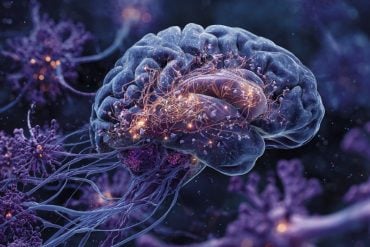Summary: Everyone’s brain has a unique ‘pain fingerprint’. Using brain scans, researchers found significant differences in the timing, frequency, and location of gamma oscillations – brain waves linked to pain perception.
Surprisingly, some individuals showed no gamma waves at all. This research underscores the extreme variability of pain response among individuals and suggests the potential to identify individual ‘pain fingerprints’.
Key Facts:
- Gamma oscillations, fast-oscillating brain waves linked to pain perception, can vary greatly between individuals, with some people not showing these waves at all.
- The pattern of individual gamma responses was found to be stable over time, pointing towards the existence of individual ‘pain fingerprints’.
- This groundbreaking research has implications for understanding the functional significance of gamma oscillations and could potentially change how they are measured in other sensory domains.
Source: University of Essex
New research has revealed everyone’s brain has a ‘pain fingerprint’ that varies from person to person.
The University of Essex-led study, in collaboration with the neuroscience of pain group at the Ludwig Maximilians University of Munich, found fast-oscillating brain waves linked to brief pain and touch can differ widely in scans.
These waves, called gamma oscillations, were previously thought to represent pain perception in the brain – with past research focussing on group data and overlooking individual differences, even discarding them as ‘noise’ in scans.
The Department of Psychology’s Dr Elia Valentini found major differences in timing, frequency and location of the gamma oscillations and incredibly some people showed no waves at all.
Dr Valentini said: “Not only, for the first time, can we pinpoint the extreme variability in the gamma response across individuals, but we also show that the individual response pattern is stable across time”.
“This pattern of group variability and individual stability may apply to other brain responses, and characterising it may allow us to identify individual pain fingerprints in the activity of the brain.”
The study, published in the Journal of Neurophysiology, was able to map patterns in participants from another lab, suggesting a replicable phenomenon.
In total, data from 70 people were examined. The experiments were split into two studies with a laser used to generate pain.
Overall, it was discovered that the subject’s gamma waves were “remarkably stable” and created similar individual patterns when stimulated.
Interestingly, some recorded feeling pain and having no gamma response, whilst others had a large response.
At this stage, it is not known why there is such variation – but it is hoped this will be a springboard for future research.
Dr Valentini added: “I think we need to go back to square one because past findings on the relationship between pain and gamma oscillations do not represent all the participants.
“Unfortunately, this minority can drive the research results and lead to misleading conclusions about the functional significance of these responses.
“We don’t mean for gamma oscillations not to have a role in pain perception, but we certainly won’t find its true role if we keep quantifying it as we did thus far.”
Dr Valentini hopes this study will also change the way gamma oscillations are measured in other sensory domains.
About this pain research news
Author: Ben Hall
Source: University of Essex
Contact: Ben Hall – University of Essex
Image: The image is credited to Neuroscience News
Original Research: Closed access.
“Interindividual variability and individual stability of pain- and touch-related neuronal gamma oscillations” by Elia Valentini et al. Journal of Neurophysiology
Abstract
Interindividual variability and individual stability of pain- and touch-related neuronal gamma oscillations
Brief painful laser and innocuous tactile stimuli have been associated with an increase of neuronal oscillations in the gamma range. Although it is indicated that event-related gamma oscillations may be highly variable across individuals, to date no study has systematically investigated interindividual variability and individual stability of induced gamma synchronization.
Here, we addressed this question using two EEG datasets. The first dataset contains two repeated sessions of tactile and painful stimulation from 22 participants. The second dataset contains a single session of painful stimulation from 48 participants. In the first dataset, we observed gamma responses in the majority of the included participants.
We found a broad interindividual variety of gamma magnitudes, time-frequency (TF) response patterns, and scalp topographies. Some participants showed a gamma response with individually unique time-frequency patterns, others did not exhibit any gamma response.
This was reproducible and therefore stable; subjects with a large gamma magnitude in the first session showed a large gamma magnitude and a similar response pattern in the follow-up session. The second dataset confirmed the large between-subject variability, but only a fraction of the included participants exhibited laser-induced gamma synchronization.
Our results indicate that current EEG measures do not reflect the complex reality of the diverse individual response patterns to brief pain and touch experiences.
The present findings question whether a similar phenomenon would be observed in other neuroscience domains. Group results may be replicable, but could be driven by a subgroup of the sample.








